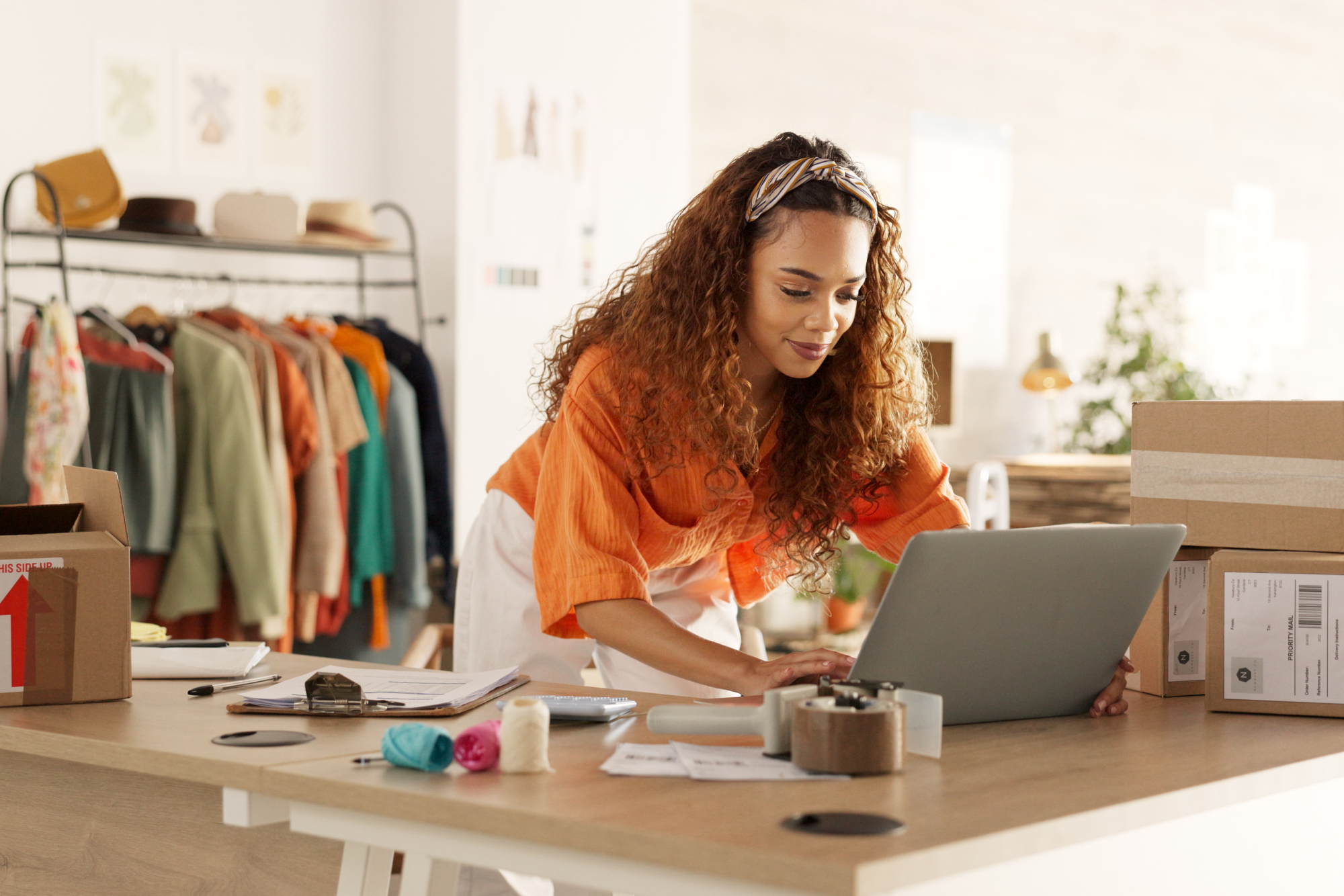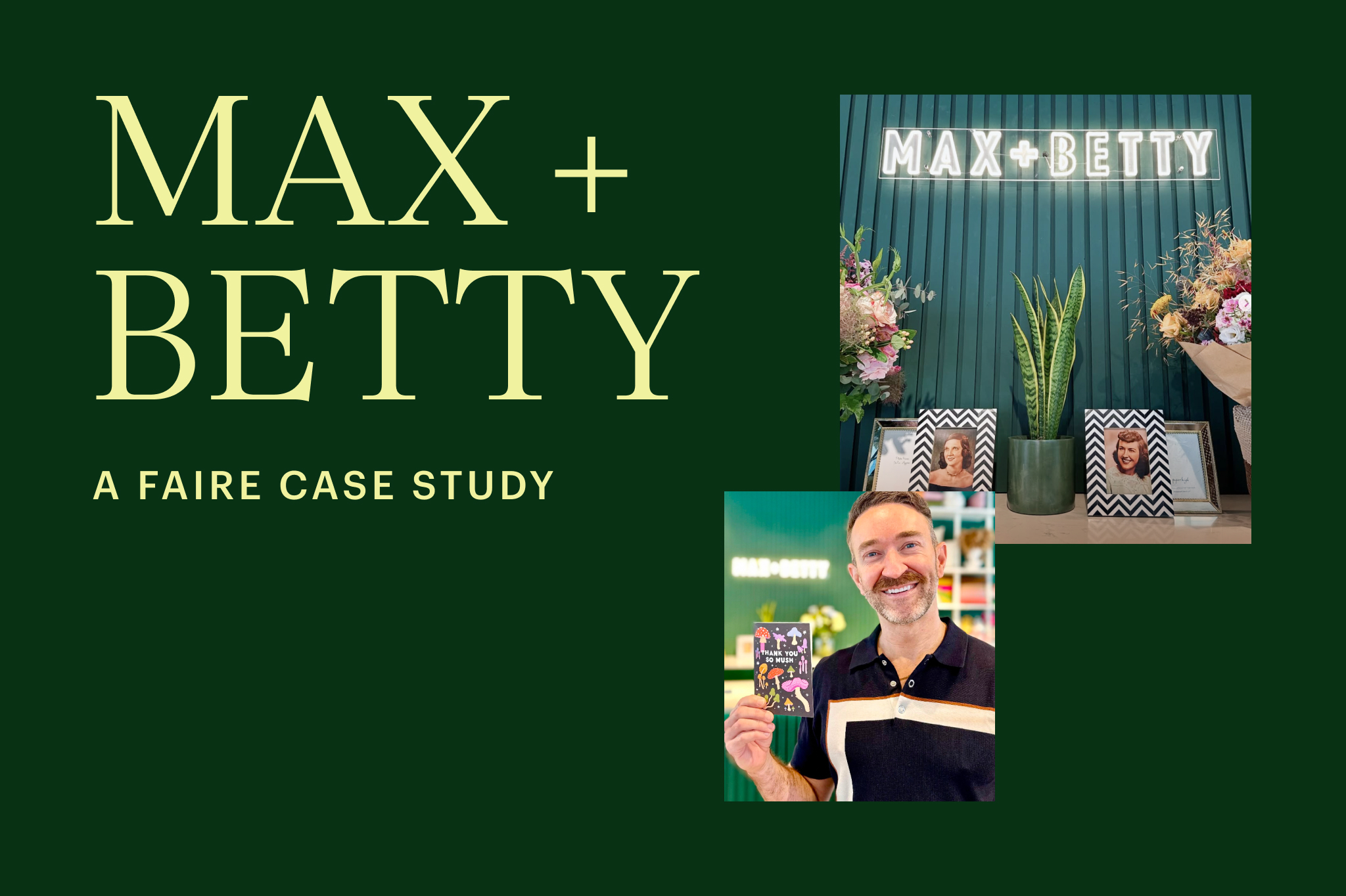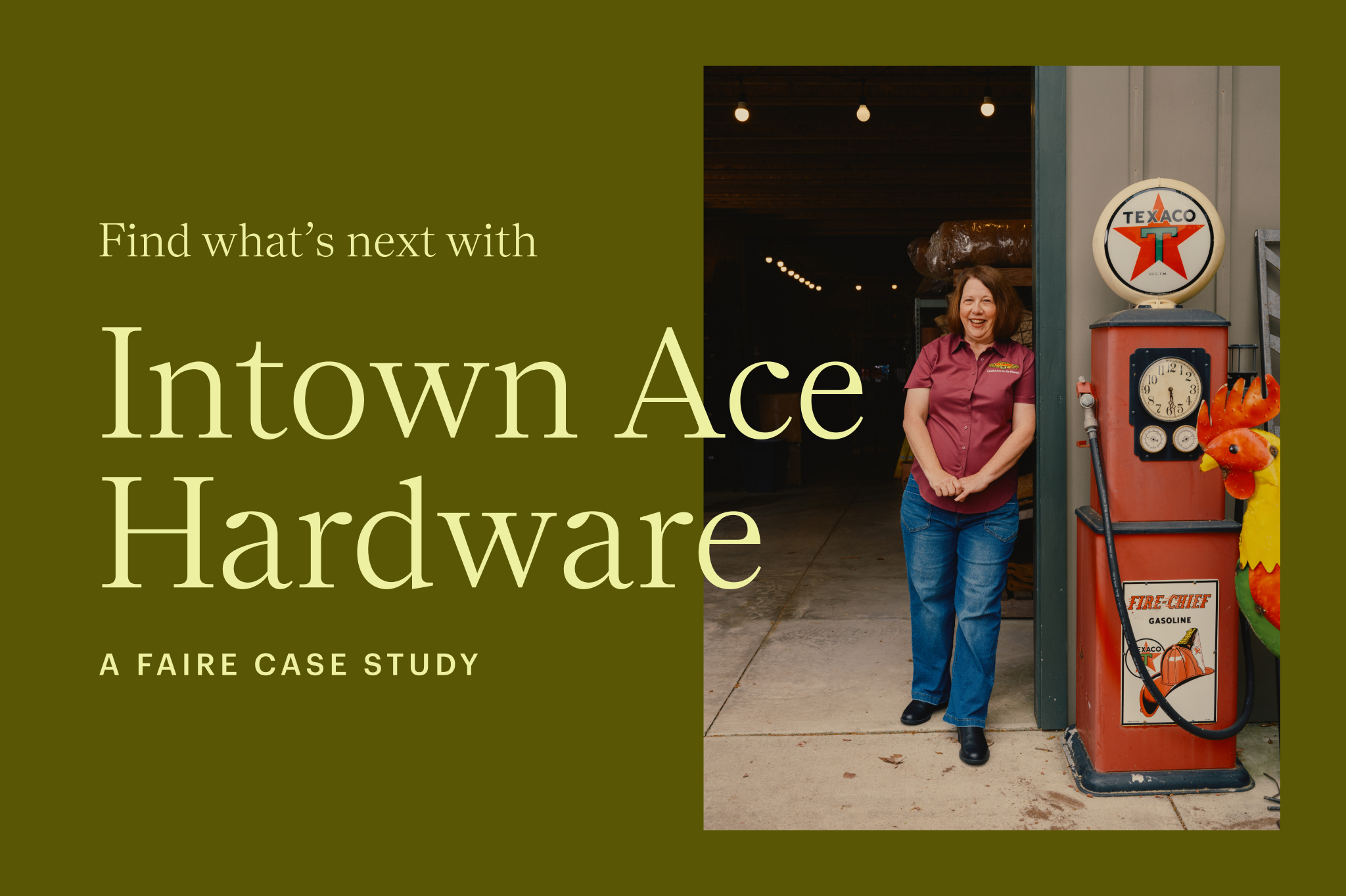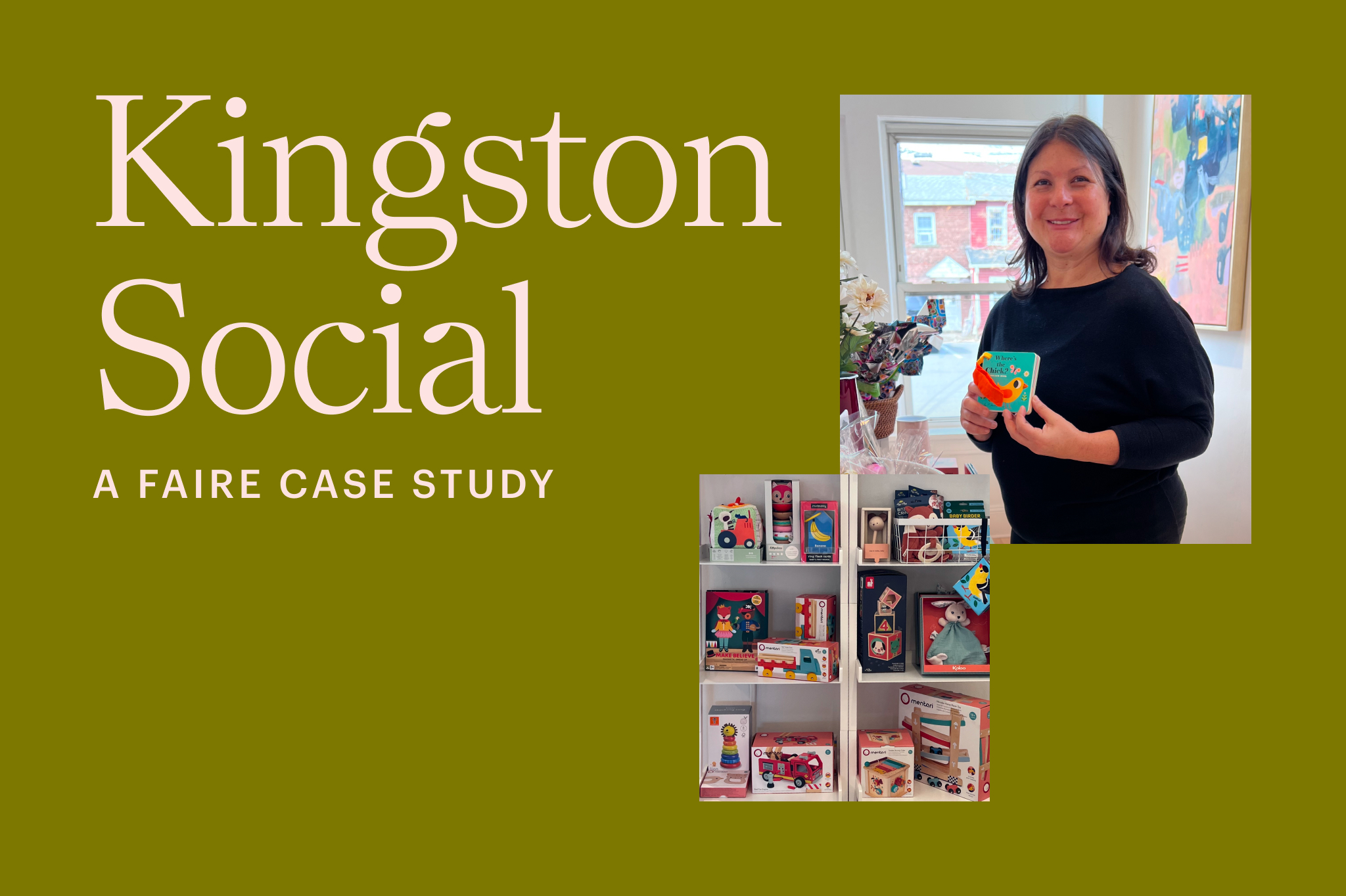

Cost-effective retail marketing is essential for independent businesses looking to maximize their promotional efforts without breaking the bank. With the right mix of marketing channels and techniques, you can make the most of a limited budget and attract a larger share of customers who are looking for products like yours.
What is retail marketing?
Essentially, any tactic that helps your business become more prominent and recognizable—and grows sales—can be seen as retail marketing. The signage in a shop window and throughout the sales floor, for example, could be considered components of a retailer’s marketing strategy. However, for brands looking to grow a wholesale business, a cost-effective and impactful marketing strategy will likely rely on digital tools such as search engines, paid advertising, social media, and emails targeting retailers.
The term retail marketing can be broken down further into smaller categories including:
- Social Media Marketing: Uses social media platforms such as Instagram and TikTok. Strategies include live shopping, influencer marketing, and paid posts.
- In-Store Marketing: Focuses on marketing within brick-and-mortar locations. Strategies include in-store promotions, in-store displays, events, and sample products.
- E-Commerce Marketing: Focuses on marketing online stores within the internet. Strategies include Search Engine Optimization (SEO) and paid search ads.
- Omni-Channel Marketing: Focuses on marketing the brand experience across a variety of channels. Strategies prioritize connecting channels to build brand authority.
- Direct Marketing: Focuses on marketing directly to the consumer. Strategies include newsletters or direct mail.
- Mobile Marketing: Focuses on marketing via mobile phones and devices. Strategies include SMS marketing and location-based marketing.
Take note: the terms retail marketing and retail advertising are interchangeable. For the sake of this article, we’ll be referring to the process as retail marketing.
Why is retail marketing important?
With a marketing strategy, you’re able to make an impression on many more shoppers than you would otherwise. You can attract potential customers and engage them until they make a purchase. Without marketing your business, you’re wholly dependent on passersby coming inside your store to browse and word-of-mouth recommendations. With a smart marketing strategy, you can take charge of your business rather than relying on chance.
The four R’s can be a helpful framework as you plan your marketing strategy:
- Recognition: Make your store or your wares easy to identify. Familiarity with your store is the goal, so you might give away tote bags sporting your logo to shoppers. When customers use that bag later on, they’re passively spreading the word about your business.
- Relevance: Your products should meet your target customers’ needs. Any interaction with your potential shoppers should take their desires and challenges into account. For instance, if your ideal customer is a college student, you wouldn’t market expensive tableware and home goods to them. You’d highlight items that make sense for their budgets and lifestyles.
- Reward: Provide value to your shoppers. You can help make each shopping trip feel special, with excellent customer service, free samples, and beautiful packaging. The goal is to have a shopper walk out of your store feeling accomplished, uplifted, and satisfied.
- Relationship: For independent businesses, good relationships with your customers are vital. Warm interactions in your store mean more word-of-mouth recommendations and long-term loyalty. There’s a lot you can do to have a good relationship with your shoppers, from friendly greetings to finding just the right products for them to offering speedy solutions to issues.
Retail marketing strategy vs. retail marketing techniques
As an independent business, it’s important to have a solid retail marketing strategy. Any one retail marketing tactic on its own likely won’t be enough—the right mix of techniques together ladder up to your overall retail marketing strategy. Your strategy should lay out who you want to reach, the messaging and methods you’ll use to reach them, and, once you get their attention, how you plan to turn them into happy, satisfied customers. The last one is where the retail marketing mix comes into play. This mix traditionally covers product, price, place, promotion, people, and presentation (often referred to as the 6 P’s)—as well as the processes that make businesses successful in all these categories.
Cost-effective retail marketing techniques
We’ve gathered some of the best retail marketing techniques known to help businesses like yours develop a successful strategy to boost visibility and sales.
1. Search engine optimization
Search engine optimization, more commonly known as SEO, is an essential part of the retail marketing mix for modern businesses. Optimizing your website for Google and other search engines can help connect you with customers currently searching online for products like yours. You can always invest in paid search engine marketing—essentially paying search engines to list your website in the sponsored results whenever users search for specific keywords—but this can be costly, and not all retailers will click on the sponsored results. SEO is more cost-effective because it involves activities that organically increase your website’s search ranking, such as researching keywords, creating content, building links, and using tools like Google Analytics.
For brands, there are also ways to increase your search ranking on Faire so relevant retailers are more likely to find your shop page. You can write concise and detailed product titles and descriptions, use accurate product types, take high-quality photos, maintain low order minimums, and adopt Faire Direct tools.
2. Word of mouth
Word of mouth is one of the best techniques that small businesses can use to attract new customers with minimal effort or investment. It’s always good to revisit your customer service strategy and try to go above and beyond, so customers are more likely to leave positive feedback and five-star reviews. It also can’t hurt to simply ask customers for a positive review if they’re happy with their purchase. Most people are glad to help out a small business.
Additionally, you might consider:
- Asking for feedback through surveys and questions on your social communities, then sharing the best quotes on your website and social media posts.
- Offering an incentive such as a small discount or free gift to any customer who refers a new buyer. You can share details about these incentives via social media, on your website, through an email campaign, and with flyers or postcards included with a purchase.
3. Promotions and discounts
Retail customers are always looking for ways to save some money with promotions and discounts. You can offer buy-one-get-one deals or percentage discounts on select products that you want to promote or clear from your inventory, such as big-ticket items or last season’s merchandise, or run limited-time sales for special events like Black Friday or Cyber Monday. You could also give out thank-you coupons with every purchase as an incentive to return and buy more before the coupon’s expiration date.
Make sure to share the details of your special offer via email and on your website, blog, Faire shop page, and social media channels so you can reach as many customers as possible.
4. An organic approach to social media
Paid ads on social media platforms like Instagram and TikTok can play an important role in your retail marketing strategy, but they’re not always cost-effective. Fortunately, there are many organic social media marketing techniques that cost next to nothing.
Consider taking beautiful photos of your products in a seasonal setting or create a fun scene with merchandising inspiration for retailers centered on an upcoming holiday or month such as Pride or Women’s History Month, then share the images on Instagram. Make sure to include relevant and timely hashtags so you can get discovered by new followers, and read our product photography tips so you can put your best photos forward. You can also use TikTok or Instagram Reels to post videos showcasing your products or sharing how they’re made, while Facebook and Instagram Live videos are a great way to speak directly to your followers online.
No matter which platforms you invest in, remember each one has unique image and design requirements. Free tools like HubSpot’s brand kit generator can help you adhere to these standards while making sure your logo and social media icons look nice and crisp for your future followers.
5. Targeted emails
Sending targeted emails to segmented groups of customers is one of the easiest and cheapest ways to promote your business and increase your conversion rate. Customers tend to respond more positively when an email feels like it was written just for them, and it doesn’t have to cost anything other than a bit of extra time. We’ve laid out some tips in our Help Center to ensure you can develop a successful email strategy from day one.
For brands, starting an email campaign on Faire is as simple as heading to the Customers tab in your brand portal and creating custom email lists for different audiences. This could include customers who’ve never placed an order, customers with unused credit, or retailers you think are a good fit for specific products. Once your lists are set, just click on Campaigns under the Marketing tab to create an email campaign with a unique name, recipients, and a subject line, along with optional preview text, message text, and design using the beautiful logos and images you’ve been developing.
6. Curb appeal
To understand the power of curb appeal, think about Madison Avenue holiday window displays or Zillow house listings. Of course, independent retailers don’t have enormous budgets for window art, but some simple merchandising has the power to draw people in.
With considered aesthetic touches, you can tell your brand story, showcase popular items, and make an impression on potential shoppers. When you’re imagining your display, consider seasonality, like twinkle lights and thematic colors during the holidays or a beach scene for hot summer days. If you’re offering free samples, be sure that’s clear to shoppers as they walk by (and hopefully in!). If your store has a particular theme or color pattern, make sure the display matches so that shoppers know what to expect.
Of course, if you don’t have the luxury of a grand window to display your goods, you still have the opportunity to delight potential shoppers. Try engaging sidewalk signage to direct foot traffic to your store or announce your grand opening. Even just a little chalkboard can tell passersby about limited-time offers and deals and showcase a little personality too.
7. Retail display techniques
How you display your goods inside your store is just as important as your window display. The way you organize and merchandise your products can say a lot about your store and can make for a delightful shopping experience. When you’re putting together your displays, get strategic about what items you’re showcasing.
Here are a few tips:
- Bundle complementary products, especially if they’re part of a larger trend. For instance, you might have a whole table devoted to self-care, with yoga mats, candles, and eye masks.
- Stimulate all five senses with pleasing color palettes, a signature scent you diffuse throughout the store, and music that reflects your store’s style. You might offer candies at the register or lemonade at the door on hot days. These multisensory experiences can elevate a regular day of shopping to a memorable, special experience.
- Create fun signage to highlight bestsellers or special promotions. Shelf talkers or personal recommendations from staff can bring some personality into your store and tell a powerful brand story.
8. Influencer marketing
A great, effective way to reach Millennial and Gen-Z shoppers is by partnering with a social media influencer. An established influencer can bring authority and authenticity to your business by exposing your products to a whole new audience and advocating for your goods. These partnerships don’t have to be expensive: You might find a local artist or chef with a solid following or perhaps a fellow business owner.
Before you hire an influencer, it’s important to pay attention to their metrics. You can look at audience size, number of comments and likes on their posts, and rate of shares and saves. But even more than the hard numbers, it’s important to think about who you want to represent your shop online. What sort of influencer does your target audience follow? What sort of lifestyle do they have and what area do they live in? You’ll want to work with an influencer your ideal shopper will relate to and want to emulate.
Of course, you want to reach as many people as possible, but keep in mind that more followers isn’t always better when it comes to social media. Consider working with a micro-influencer with high engagement rates. You might not reach as many people, but these customers will be much more likely to engage with your store. For example, if you own a craft store, you may have success finding new shoppers if you partner with a knitting-focused micro-influencer in your area.
9. Loyalty promotions and programs
A Statista survey found that 80% of US consumers claim to purchase more frequently from a brand after joining its loyalty program. This is an opportunity for your retail store to reach new customers, encourage repeat purchases, build stronger relationships, and even differentiate your store from a competitor.
There are lots of different approaches for loyalty promotions and programs. You might simply offer discounts for repeat buyers, surprise shoppers with free gifts or samples on their birthdays, or invite VIPs to exclusive parties and launches.
You could also create a points system—think of shops like Jenni Kayne or Sephora—and give shoppers points for dollars spent, special milestones, and even for sharing purchases on social media or leaving reviews.




